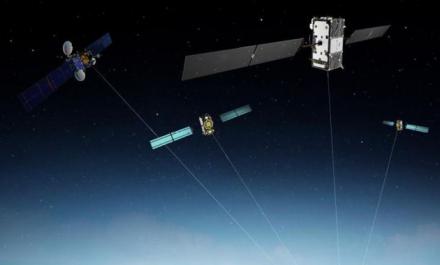Galileo Satellites GSAT0215, GSAT0216, GSAT0217, and GSAT0218, launched in December 2017, have been commissioned for operational use.
Since Friday 12 October, all Galileo satellites  that were launched last year (in December) are usable for service provision. NAGUs 2018023, 2018019, 2018020 and 2018018 announced the commissioning of Galileo satellites GSAT0215 (E21), GSAT0216 (E25), GSAT02017 (E27) and GSAT0218 (E31), increasing the number of satellites that are available for service provision to 18.
that were launched last year (in December) are usable for service provision. NAGUs 2018023, 2018019, 2018020 and 2018018 announced the commissioning of Galileo satellites GSAT0215 (E21), GSAT0216 (E25), GSAT02017 (E27) and GSAT0218 (E31), increasing the number of satellites that are available for service provision to 18.
Galileo launch information
Galileo satellites Nicole (GSAT0215), Zofia (GSAT0216), Alexandre (GSAT0217) and Irina (GSAT0218), were launched on Tuesday 12 December 2017 at 18:36 UTC, from the Guiana Space Centre (CSG) - Europe’s Spaceport in French Guiana - with a nominal duration of 3 hours, 55 minutes and 45 seconds from lift-off to separation of the satellites.
The Arianespace Ariane 5 has placed the four Galileo satellites into MEO (Medium Earth Orbit) circular orbit, at an altitude of 22,922 km above sea level. The launcher carried a total payload of approximately 2,860 kg. Each of the four satellites presents the following features:
|
Mass at launch of 715 kg. each, for a total of 2,860 kg |
|
|
DIMENSIONS |
2.7 m x 1.2 m x 1.1 m |
|
WIDTH (with solar array deployed) |
14.67 m |
|
DESIGN LIFE |
More than 12 years |
|
ONBOARD POWER |
1,900 W |
|
NAVIGATION SIGNAL |
3 bands (E5, E6 and E1) |
Galileo status information
Updated information on the status of the Galileo constellation can be found in the Constellation Status section of GSC website. Moreover, to receive NAGUs automatically, register to the GSC web portal.
Since Galileo Initial Services were declared on December, 2016 more than 100 million devices are using Galileo today. To keep track of Galileo-enabled devices serving a variety of needs as they become available, check out: usegalileo.eu.
The Galileo Initial Services allow the use of Galileo Open Service (OS), which enables a free of charge, global ranging, positioning and timing service for the OS users. Galileo is interoperable with the GNSS constellations (GPS, GLONASS, Beidou). By offering dual frequencies as standard, Galileo is set to deliver real-time positioning accuracy down to the meter range. If you have any questions about Galileo, you are invited to contact the GSC Helpdesk.
Media note: This feature can be republished without charge provided the European GNSS Agency (GSA) is acknowledged as the source at the top or the bottom of the story. You must request permission before you use any of the photographs on the site. If you republish, we would be grateful if you could link back to the GSA website (http://www.gsa.europa.eu).